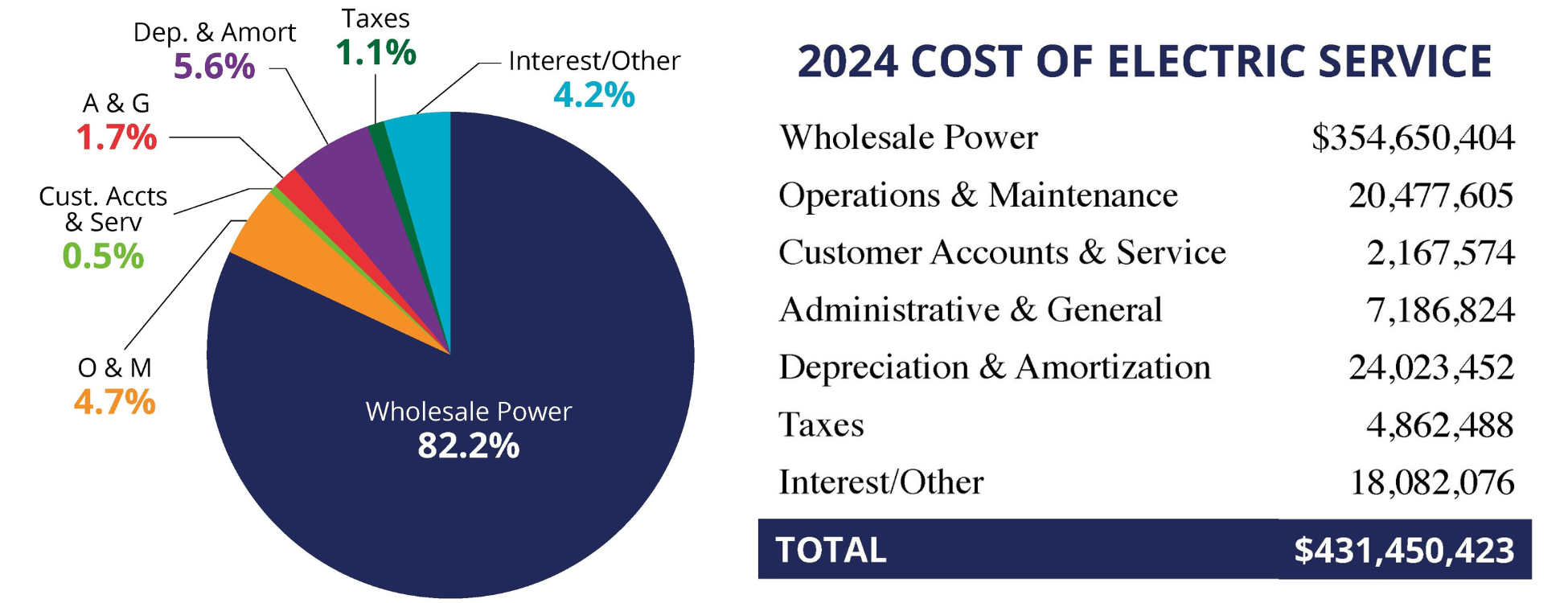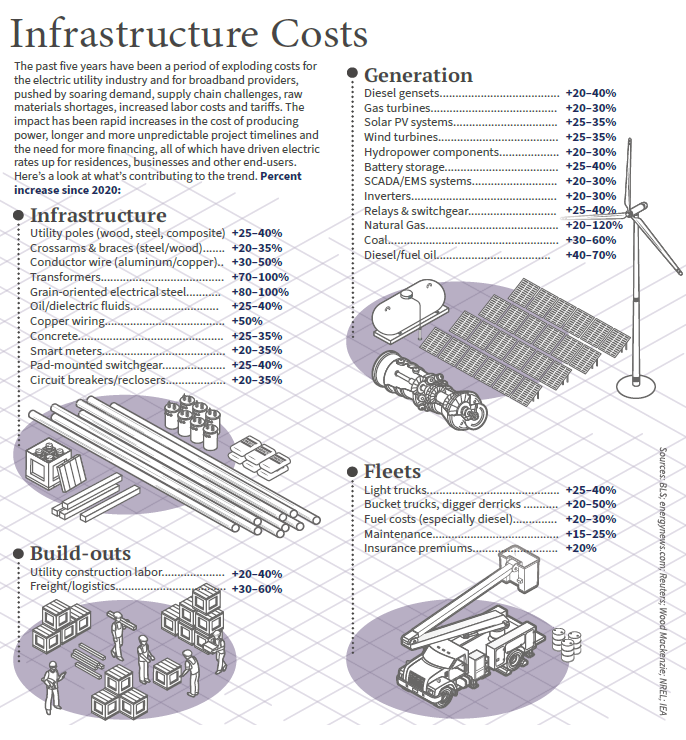Phone: 800.279.2667 | Fax: 701.577.3777
The Price Behind Your Power

Alex Vournas
General Manager
Mountrail-Williams Electric Cooperative (MWEC) was built by the communities we serve.
As I mentioned last month, the founders and pioneers of rural electrification were true leaders, paving the way for the standard of living we benefit from today. I am often reminded of the vital role your electric cooperative plays in providing an essential service that heats homes, energizes farms, and drives economic growth. All while creating an energy future focused on safe and reliable electricity that remains a good value.
Throughout the year, I’ve shared how national trends, including inflation, increased regulations, supply chain disruptions, and a shortage of generation resources, have all put pressure on the electrical industry. Although MWEC continues to provide some of the lowest electric rates in the nation, your cooperative is not immune to the challenges impacting utilities everywhere.
In January 2025, Basin Electric Power Cooperative implemented its first rate increase since 2016, raising rates by approximately seven percent. Wholesale power cost is the largest cost driver for most distribution electric cooperatives. At MWEC, it accounts for approximately 80 cents of every dollar spent on your electric bill.
While MWEC’s growth and financial health helped us avoid passing on the seven percent increase to our members earlier this year, reliability comes at a continuously increasing cost.
Rates are the lifeblood of your cooperative, and we understand that raising rates affects all members. However, a rate increase is now necessary to maintain reliability, meet the growing needs of our members, and ensure financial health, not only for today but for decades to come.
What to Expect
The Basin Electric Board of Directors has announced a 10% increase in wholesale power cost next year. MWEC is a member-owner of Basin Electric, purchasing 99% of its wholesale power from them. With Basin Electric’s power cost increasing in 2026, MWEC’s electric rates will also rise on average by approximately 10%. Key factors that impact the cost of wholesale power include inflation, power market volatility, member load growth, and the need to invest in new generation and transmission resources to ensure future reliability.
The bill you receive in February 2026, which is for January usage, will be the first bill to reflect the new rates. In this issue, we have outlined the rates that will primarily impact our residential members:
• General Service (Residential) Rate
• Electric Heat Rate
• Grain Drying Rate
This is the first of two planned rate increases to wholesale power, with a second increase expected in 2027. Although the details of Basin Electric’s second wholesale power cost increase have not been finalized, we will communicate this information to our membership as soon as it is determined.

What’s Driving the Cost of Wholesale Power
Warren Buffett once said, “Someone is sitting in the shade today because someone planted a tree a long time ago.” This quote reminds us that the benefits we enjoy today are the result of forward-thinking investments made by our cooperatives in the past. By upgrading equipment, adding generation capacity to meet member load growth, and building a robust transmission system, Basin Electric is ‘planting these seeds’ to meet the future needs and ensure reliability for our existing membership.
It’s these forward-thinking investments that will keep our homes warm 10 years from now, and for decades to come.
Key factors that impact the cost of wholesale power include:
Member Load Growth: Basin Electric’s members are using more electricity than ever, driving the need for new generation and transmission to maintain reliability. Meanwhile, lagging investment in baseload generation resources has been a reality across the nation. This growth stems from existing member demand, not from large loads (data centers, crypto mining, AI, etc).
Reliability: Basin Electric is making significant investments in reliability. Over the next 10 years, they plan to invest nearly $11 billion in generation and transmission projects to ensure dependable power for its members well into the future.
Inflation: Over several years, rising prices have made the cost of equipment and new generation and transmission assets much more expensive than in the past.
Power Market Volatility: The increasing use of intermittent renewable energy sources (such as wind and solar), weather events, fluctuations in natural gas prices, and the growing electricity demand are primary contributors to volatility.
What’s Not Driving
the 2026 Rate IncreaseData centers are not the reason for the 2026 rate increase. Basin Electric, in collaboration with its membership, developed a Large Load Program specifically designed to protect existing members from the costs and risks associated with serving large, high-demand loads such as data centers, crypto mining, and artificial intelligence facilities. With this program, large loads are required to cover the cost of generation and transmission resources needed to serve them.
As your electric cooperative, we understand the importance of reliability to our members. We are committed to managing resources wisely and investing in infrastructure to provide reliable electricity today and in the future.
We understand the value of a dollar – and our goal is that the power delivered to you always remains a good value.
Thank you for trusting in your local electric cooperative.
FAST FACTS
Electric rates for all MWEC members will increase beginning January 2026. With Basin Electric’s power cost increasing in 2026, MWEC’s power costs will also rise on average by approximately 10%.
Learn more:
Reliability requires investment. Investment in our power grid ensures we can maintain reliability and meet the power needs of today and tomorrow.
MWEC’s first rate increase in over a decade. The last residential rate increase occurred in 2009, and the previous commercial rate increase took place in 2013. Even with 2026 rate increases taken into account, MWEC will continue to offer some of the lowest rates in the nation.
Compare how we rank compared to other utilities:
Energy Information Administration
Data centers are not the reason for rate changes. Basin Electric, in collaboration with its membership, has developed a Large Load program designed to protect our existing members from the costs and risks of serving large loads.
Capital credits are the cooperative difference. As anot-for-profit, any margins (excess revenue) at the end of the fiscal year, are allocated back to our members in the form of capital credits.
Investing for the future. Learn more about how Basin Electric is investing in the future:


